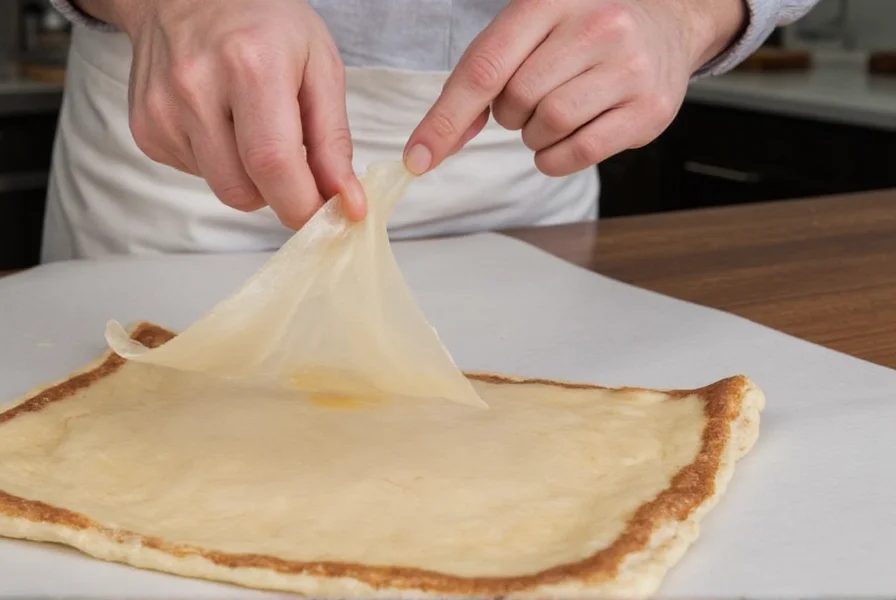Creating perfect cinnamon rings requires understanding the balance between dough elasticity, filling distribution, and baking precision. This guide provides professional techniques developed through decades of pastry experience to help both novice and experienced bakers achieve consistently excellent results.
The Origins of Cinnamon Rings
While cinnamon rolls trace their history to Swedish kanelbulle, cinnamon rings represent a creative evolution that gained popularity in American bakeries during the 1980s. The ring formation solves practical challenges of serving large groups while creating visually striking presentation. Professional bakers discovered that the circular arrangement allows for more even heat distribution during baking compared to individual rolls, resulting in consistent texture throughout.
Essential Ingredients for Perfect Cinnamon Rings
The quality of your ingredients directly impacts the final product. Unlike quick breads, yeast-raised pastries require careful ingredient selection:
| Ingredient | Professional Recommendation | Critical Function |
|---|---|---|
| All-purpose flour | King Arthur or equivalent (11-12% protein) | Provides optimal gluten development without toughness |
| Unsalted butter | European-style (82-84% fat content) | Higher fat content creates flakier layers |
| Cinnamon | Ceylon variety ("true cinnamon") | Milder, more complex flavor than cassia |
| Yeast | Instant yeast (no proofing required) | More reliable activation than active dry |
Step-by-Step Preparation Guide
Follow these professional techniques for flawless cinnamon rings:
Dough Preparation (The Foundation)
Mix 3½ cups flour, ¼ cup sugar, 2¼ tsp instant yeast, and 1 tsp salt in a stand mixer. Heat 1 cup whole milk and 6 tbsp butter to 110°F (warm but not hot). With dough hook attachment, mix liquid into dry ingredients until shaggy dough forms. Knead 7-10 minutes until smooth and elastic. The windowpane test confirms proper gluten development—stretch a small piece of dough; it should form a translucent membrane without tearing.

Filling Application (The Flavor Layer)
Roll dough into a 16x12 inch rectangle. Mix 1 cup softened butter with 1½ cups brown sugar, 3 tbsp Ceylon cinnamon, and ¼ tsp cardamom. Spread evenly, leaving ½ inch border. Professional bakers recommend using an offset spatula for even distribution—too thick causes leakage, too thin lacks flavor impact.
Ring Formation (The Critical Technique)
Carefully roll dough into a log, pinch seam to seal, then cut into 12 equal pieces. Arrange cut-side up in a greased 10-inch springform pan, placing pieces close together with cut sides facing inward. This creates the signature ring pattern as the rolls expand during proofing. Allow 45-60 minutes proofing time until doubled—under-proofed rings won't pull apart properly, over-proofed rings lose definition.
Advanced Techniques for Perfect Results
Professional bakeries use these methods to achieve consistent quality:
- Temperature control: Maintain dough at 78°F during proofing for optimal yeast activity
- Steam injection: Add ½ cup water to oven floor during first 5 minutes for improved oven spring
- Rotated baking: Turn pan 180° halfway through baking for even coloration
- Glaze timing: Apply glaze when rings reach 190°F internal temperature for ideal absorption
Common Variations Worth Trying
While traditional cinnamon rings delight purists, these variations expand your repertoire:
Apple Cinnamon Ring
Add 1½ cups finely diced Granny Smith apples tossed with lemon juice to the filling. The fruit's acidity balances the sweetness while adding textural contrast.
Cheesecake-Stuffed Ring
Create a well in the center of each roll piece before arranging in the pan. Fill with 1 tbsp cream cheese mixture (8 oz cream cheese, ¼ cup sugar, 1 egg yolk, 1 tsp vanilla) for a delightful surprise.

Troubleshooting Common Issues
Even experienced bakers encounter challenges. Here's how to solve frequent problems:
- Filling leakage: Caused by overfilling or insufficient sealing. Use measured filling amounts and ensure tight seam closure.
- Dense texture: Typically from over-kneading or old yeast. Test yeast viability before use and monitor kneading time.
- Uneven baking: Rotate pan halfway through baking and ensure proper oven calibration.
- Soggy bottom: Place pan on a preheated baking sheet to ensure bottom crust sets properly.
Serving and Storage Recommendations
For optimal enjoyment, serve cinnamon rings within 4 hours of baking. The ideal serving temperature is 120-140°F—warm enough to melt the glaze slightly but cool enough to handle. Store leftovers in an airtight container at room temperature for up to 2 days. For longer storage, freeze individual portions and reheat in a 300°F oven for 8-10 minutes.
Conclusion: Mastering the Art of Cinnamon Rings
Perfecting cinnamon rings requires attention to detail at every stage, from ingredient selection to final presentation. By understanding the science behind yeast development, proper filling distribution, and precise baking techniques, you can consistently create impressive pastries that delight both visually and flavor-wise. Remember that practice refines your technique—each batch provides valuable insights for your next creation. The most successful bakers treat each ring as both a technical challenge and an artistic expression.
What's the difference between cinnamon rings and cinnamon rolls?
Cinnamon rings are formed by arranging individual roll pieces in a circular pattern within a single pan, creating a cohesive ring that serves multiple people. Cinnamon rolls are baked separately as individual portions. The ring formation allows for more even baking and creates a distinctive pull-apart texture with interconnected layers.
Can I make cinnamon rings ahead of time?
Yes, prepare the shaped rings and refrigerate overnight (8-12 hours). Remove from refrigerator 30 minutes before baking to allow partial warming, then bake as directed. The cold fermentation enhances flavor development while providing scheduling flexibility for morning baking.
Why does my cinnamon ring fall apart when I try to slice it?
This typically occurs from under-proofing—the dough hasn't developed sufficient structure. Allow proper proofing time until the rings have visibly doubled in size and feel airy when gently pressed. Using instant yeast instead of active dry can also improve consistency in proofing.
What's the ideal baking temperature for cinnamon rings?
Bake at 350°F (175°C) for 25-32 minutes. This moderate temperature allows proper rising and browning without burning the sugar filling. Use an instant-read thermometer to check internal temperature—190°F indicates perfect doneness with moist but fully cooked interior.











 浙公网安备
33010002000092号
浙公网安备
33010002000092号 浙B2-20120091-4
浙B2-20120091-4